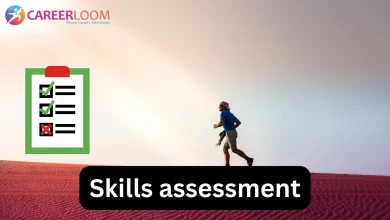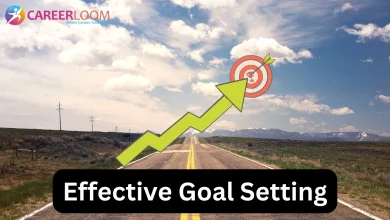Building Your Personal Development Plan: A Blueprint for Growth

The journey of personal development isn’t a destination—it’s a lifelong pursuit. If you’ve ever felt like you’re standing at the base of a mountain, unsure of where to go next or how to begin climbing, you’re not alone.
Many of us struggle with knowing exactly how to improve ourselves or what direction to take in life. The beauty of a personal development plan, however, is that it serves as your personalized blueprint, helping you carve out your path and build the person you want to be, step by step.
Building your personal development plan is a way to invest in your future. It’s about identifying where you are now, where you want to go, and then creating a clear strategy for getting there. This roadmap will help you navigate the ups and downs of life with confidence and clarity.
But it’s not just about setting big goals; it’s about breaking them down into manageable actions that keep you moving forward. So, let’s dive into how you can build a solid personal development plan that’s tailored specifically to your growth.
What is a Personal Development Plan?
A personal development plan (PDP) is essentially a roadmap that helps you achieve your personal goals. It’s a structured framework that defines your skills, goals, and areas for growth while helping you track your progress.
Think of it as your very own “how-to” guide for self-improvement. Whether you’re focusing on professional growth, improving personal habits, or boosting your emotional intelligence, a PDP can give you direction and purpose.
The key to a good personal development plan is its ability to make your dreams achievable. A great personal development plan should include specific goals, timelines, and measurable milestones. For example, if one of your goals is to improve your communication skills, your PDP might outline daily journaling, attending public speaking workshops, or seeking feedback from peers. It’s about turning your aspirations into concrete actions.
Why is Having a Personal Development Plan Important?
Having a personal development plan is like having a GPS for life. Without one, you may find yourself wandering without direction, unsure of how to reach your destination. A plan helps you prioritize your goals and keep track of your progress. With a solid PDP, you can focus your time and energy on what really matters, increasing your chances of success. By understanding what areas need improvement and setting actionable targets, you take control of your growth rather than letting circumstances dictate your development.
To put it simply, it’s like building a house. Without a blueprint, you’d end up with something that’s half-finished, unstable, or just plain impractical. But when you have a plan in place, you have a clear vision of the structure and purpose of each step, making it easier to achieve lasting success.
How Do You Build a Personal Development Plan?
Building a personal development plan isn’t a one-size-fits-all approach—it’s a custom-made guide that fits your unique goals. The first step is identifying your strengths and weaknesses. Recognizing what you’re already good at can give you confidence, while understanding areas that need improvement helps you focus your efforts.
After that, set clear, actionable goals. For example, you might say, “I want to get better at time management.” That’s a good start, but now you need specifics. Your personal development plan could include breaking the goal down into smaller objectives like setting daily priorities, using a planner, or even reading a book about productivity. By clearly defining your goals and creating a timeline, you’re making it easier to stick to your plan and stay on track.
How Do You Identify Your Strengths and Weaknesses?
The process of identifying your strengths and weaknesses begins with introspection. Take a step back and honestly assess yourself. What are the things you excel at? Maybe you have a knack for creative thinking, or you’re good at leading others. These are your strengths. On the flip side, you may struggle with time management or have difficulty communicating clearly in stressful situations. These are your weaknesses.
It’s essential to be objective when analyzing yourself—avoid being overly harsh or too lenient. Asking for feedback from others is a great way to get an outside perspective. For instance, if you’re unsure about your communication skills, ask a close friend or colleague for their honest opinion. This will help you identify areas that you might not have considered.
How Can You Set Effective Goals in Your Personal Development Plan?
Effective goal-setting is a cornerstone of any good personal development plan. The SMART goal framework is a useful tool for turning vague intentions into concrete targets. SMART stands for Specific, Measurable, Achievable, Relevant, and Time-bound. When you use this approach, you’re more likely to follow through and achieve what you set out to do.
Let’s say your goal is to “improve my physical fitness.” To make it SMART, you’d rewrite it as: “I will exercise for 30 minutes at least three times per week for the next three months.” Notice how the goal is specific (exercise for 30 minutes), measurable (three times per week), achievable (30 minutes is realistic), relevant (it aligns with your health goals), and time-bound (three months). This clarity makes it much easier to track your progress and stay motivated.
What Are Some Common Mistakes to Avoid When Creating a Personal Development Plan?
Building a personal development plan isn’t just about setting goals—it’s about setting the right goals. One common mistake is setting goals that are too vague or too ambitious. Instead of saying “I want to be more organized,” a better goal would be “I will declutter one area of my home each week for the next month.” Specific goals like this are far easier to achieve and provide a clearer sense of accomplishment.
Another mistake is neglecting to evaluate your progress. A personal development plan isn’t something you set and forget—it requires regular check-ins to make sure you’re staying on track. Set aside time every few weeks to review your goals and adjust them if needed. If you’re not making the progress you hoped for, ask yourself why and reassess your approach.
How Can You Track Your Progress?
Tracking your progress is essential to maintaining momentum. Use a journal, planner, or digital tool to note your achievements, challenges, and adjustments. This keeps you accountable and helps you identify patterns or obstacles in your journey.
For example, if your goal is to read more books, keep a list of the books you’ve read and track how many pages you complete each week. This simple tracking method can provide a sense of accomplishment and encourage you to keep going.
What Are Some Tools to Help You Build Your Personal Development Plan?
Today, there are countless tools and resources available to help you create and track your personal development plan. Apps like Trello or Notion can help you organize your goals, while habit-tracking apps like Habitica make it fun to stay on track. Additionally, websites like Coursera and Udemy offer online courses to help you develop new skills.
But tools are only part of the equation. The real key to building an effective personal development plan is commitment. Tools can help, but they won’t do the work for you. It’s your dedication to following through that will determine your success.
How Can a Personal Development Plan Improve Your Career?
A personal development plan can be a game-changer when it comes to your career. By identifying key skills that are important for your professional growth, you can work on them systematically. Whether it’s improving leadership skills, learning new technologies, or enhancing your networking abilities, having a development plan helps you stay focused on what matters most.
For instance, if you’re aiming for a promotion, your personal development plan might include specific steps like improving your leadership skills, taking on new projects, and seeking mentorship from someone who’s already where you want to be. The goal is to make sure you’re always growing, so you’re ready when opportunities arise.
Conclusion
Building a personal development plan is one of the best investments you can make in yourself. It’s not just about setting goals—it’s about creating a personalized roadmap that helps you get from where you are to where you want to be. By identifying your strengths, setting SMART goals, and consistently tracking your progress, you’ll be able to make steady strides in both your personal and professional life.
Don’t forget that a personal development plan is a living, breathing document. As you grow, your goals and priorities will evolve. The important thing is that you’re taking control of your growth and setting yourself up for success. Start today, take small steps, and before you know it, you’ll be amazed at how far you’ve come.
Quote:
“Success is the sum of small efforts, repeated day in and day out.” – Robert Collier


